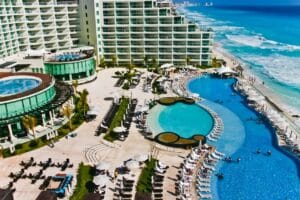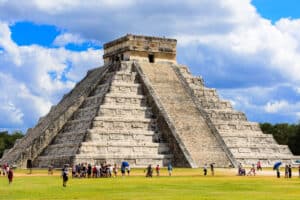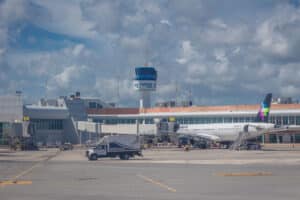Welcome to our safety guide for the gorgeous Mexican paradise, Cabo San Lucas!
Cabo is a stunning location on the southernmost tip of the Baja California Peninsula, where the waves of the Pacific Ocean and the Sea of Cortez mix upon its golden dunes.
When it comes to safety, the U.S. State Department has given the go-ahead to visit Cabo San Lucas. Crime is present, but exercising extreme caution goes a long way in Cabo!
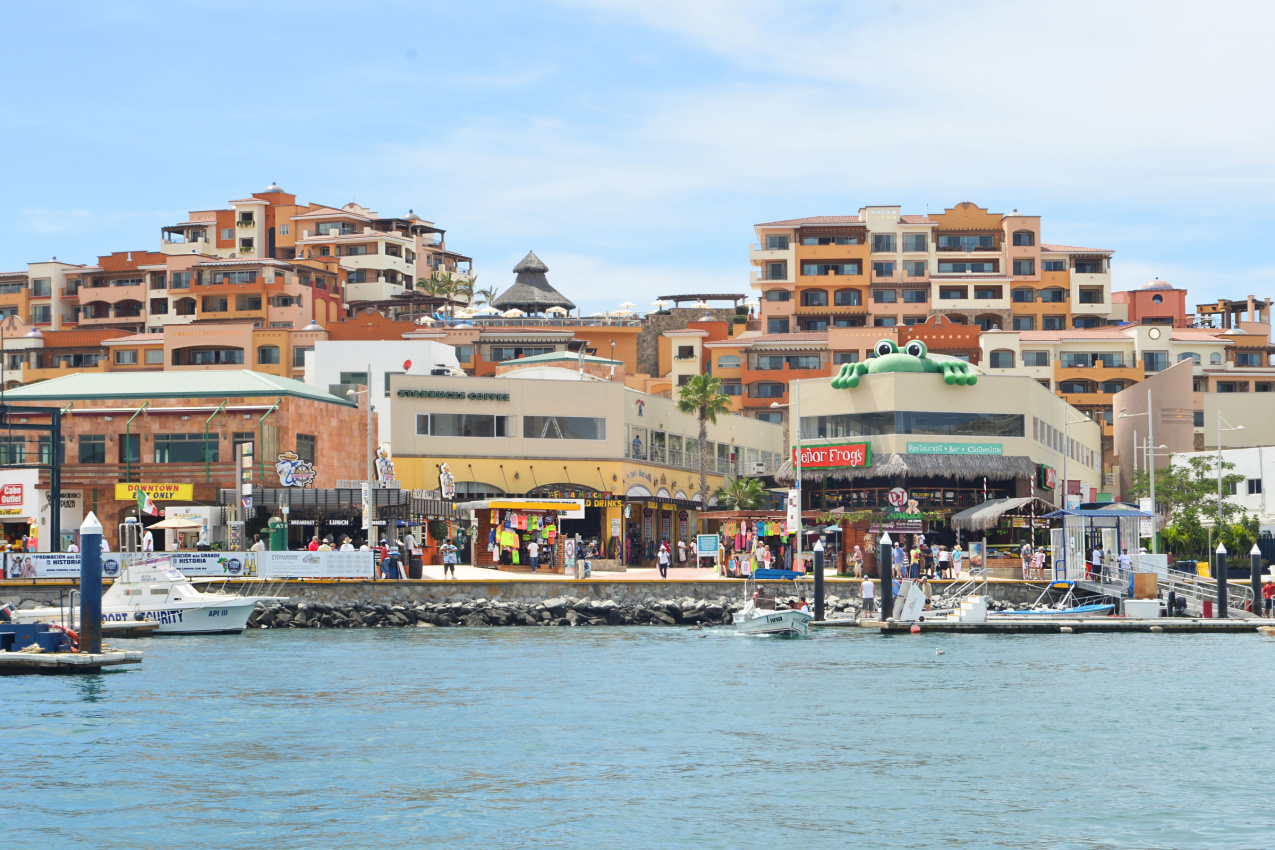
Are you planning a last minute trip to Cabo San Lucas? We’ve put together all the resources you’ll need for a fun & safe travel:
🛌 Best & Safest Places to Stay in Cabo San Lucas:
👉 Suites at PB Sunset Beach Golf – Fitness centre, Private beach area, Bar
👉 Montage Los Cabos – Beachfront, Airport shuttle, Fitness centre
👉 Chileno Bay Resort & Residences – Beachfront, Airport shuttle (free), Bar
👉 Cabo La Estancia – Family rooms, 2 restaurants, Free WiFi
⛱️ Fun Activities & Tours in Cabo San Lucas:
👉 Snorkeling Tour in Cabo San Lucas
👉 ATV tour, Camel Ride, Tequila tasting & Mexican Buffet lunch
👉 Luxury Catamaran Whale Watching Cabo San Lucas
🚗 Best & Safest Cabo San Lucas Transportation Services:
👉 Airport Pickup Service – Welcome Pickups
👉 Rent a Car – DiscoverCars
🙏 Stay Safe While Travelling:
👉 Safetywing (for medical insurance)
👉 VisitorsCoverage (for trip insurance)
In this guide, we’ll teach you precisely how cautious you need to be. We’ll talk about Cabo’s crime statistics, COVID-19 precautions, potential natural disasters, carbon monoxide awareness and prevention, beach safety, Cabo’s weather, and some advice for solo or family travelers. Let’s begin.
Unveiling the Reality: A Comprehensive Look at Cabo San Lucas Crime Rates
Cabo San Lucas sits in Baja California Sur, which, according to the U.S. State Department, is a state where travelers should “Exercise Extreme Caution” when visiting.
This warning shouldn’t worry you, as being super cautious in a foreign country goes without saying. Still, there’s a reason why exercising “extreme” caution is advised when visiting Cabo.
Let’s discuss the reason behind this by examining crime rates and news reports in the area.
Cabo San Lucas Crime Rates
Cabo San Lucas has a crime rating of 44.50—very low compared to other popular destinations in Mexico.
For example, the state’s capital, Mexico City, has a crime rating of 67.95, and the magical Cancun 56.16. The border town of Tijuana is one of the most dangerous cities in Mexico, with a staggering crime rating of 72.8%.
So why should travelers be extra cautious while visiting Cabo?
To give you a more detailed answer, we’ll share the crime reports that happened during the first four months of 2023 in Cabo, issued by the Baja California Sur state police:
- Extortion: 8
- Drug deals: 35
- Vehicle theft: 31
- Home break-ins: 38
- Assault: 79
- Family violence: 143
You never know when danger will strike you, so it’s good to be cautious even in the safest cities in Mexico.
What Are the Police Doing to Protect Cabo San Lucas?
Cabo San Lucas has a strong police presence, with local, federal, and national officials working to ensure tourist safety.
The Cabo mayor noted that by 2023, they are expecting to enlist 150 additional officials to protect the safety and serenity of the city.
Furthermore, Cabo San Lucas has made efforts to improve the coverage of security cameras and has installed around 300 new cameras throughout the area.
Cabo has also announced the installation of strategically placed panic buttons that immediately trigger the police command center in case of an emergency.
The powerful military is another force that guards the city in addition to the police. The government declared that Cabo will continue to be protected by the army at least until 2028.
All in all, Cabo is in good hands. Thanks to the effectiveness of the police and military, this beautiful destination receives over 2.8 million tourists each year!
Navigating the New Normal: Ensuring COVID-19 Safety in Cabo San Lucas
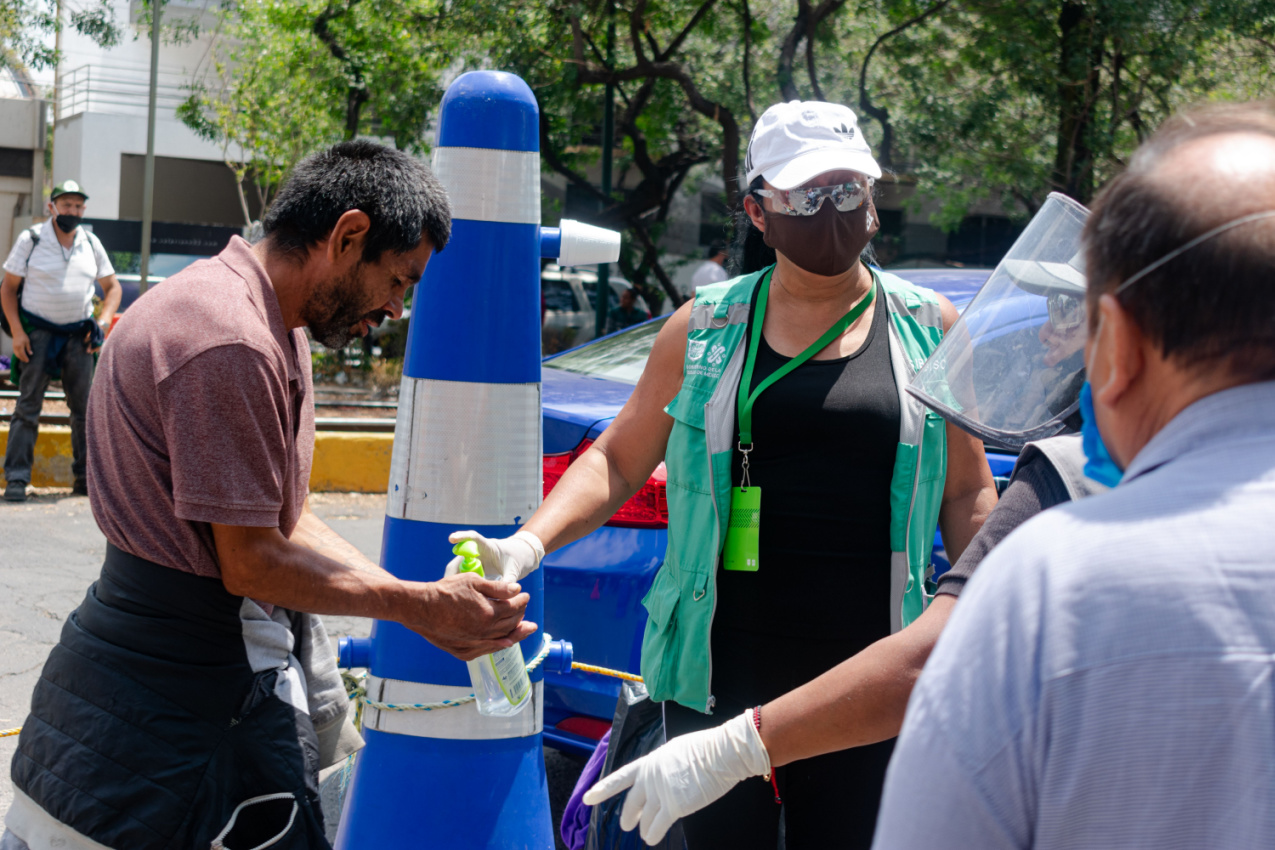
Baja California Sur doesn’t require tourists to have COVID-19 vaccines or tests to enter Cabo San Lucas.
Since COVID-19 is still present in Mexico, travelers may be tested for body temperature upon arrival to Cabo, and those who exhibit symptoms may be further examined or placed into quarantine.
If you think you may be experiencing symptoms of coronavirus while in Cabo San Lucas, go to any hospital, clinic, or laboratory to be tested. Private testing will cost between 950 and 4500 MXN ($53 and $250) for PCR tests and between 200 and 1000 MXN ($11 and $55) for viral antigen tests.
To avoid the spread of COVID-19, practice social distancing and wash your hands frequently. To learn more about how to keep safe and prevent the virus from spreading, go to the American Red Cross website.
Perils of Nature: The Risk of Natural Disasters in Cabo San Lucas
When you look at photographs of Cabo San Lucas’ sunny skies and stunning beaches, it’s difficult to imagine a natural disaster ever occurring. Nevertheless, Cabo is at risk from storms and earthquakes.
Hurricane Information and Precautions
The hurricane season at Cabo San Lucas lasts from mid-May to November, with storm activity peaking from August through October.
The last big Cabo storm was Hurricane Odile, a category 3 hurricane with winds of 125 mph that happened in September 2014. From that point on, there haven’t been hurricanes that made landfall in Cabo.
If you visit Cabo during hurricane season, you may face restrictions on seafaring and water activities owing to severe winds and waves. There are no guarantees — you could also have nothing but beautiful weather and blue skies!
Still, it’s best to monitor approaching storms on the National Hurricane Service and rearrange your vacation if necessary. If you are already in Cabo during a hurricane, stock up on supplies such as water, food, clothes, and flashlights.
If you’re staying at a Los Cabos resort, the personnel will have a security strategy in place.. Many of these resorts also have additional locations where guests can be evacuated if the weather worsens.
Check the Massachusetts Emergency Management Agency for more safety tips regarding hurricanes.
Earthquake Information and Precautions
Earthquakes are prevalent in Los Cabos, but they rarely cause damage. The quakes are typically between 4.0 and 5.0 in magnitude and are categorized as light to moderate.
One semi-powerful earthquake hit Cabo in November 2022, with a magnitude of 4.9, and another in December 2022, with a magnitude of 5.2. Like many others, these earthquakes caused no damage or loss of life.
Authorities regularly notify residents and visitors of recorded tremors and provide advice on what to do if a major earthquake hits the area. You can track earthquake activity by visiting an online tracker or installing the 911 CDMX app on your smartphone to receive an earthquake warning 60 seconds before it occurs.
Does Cabo San Lucas Suffer From Volcanic Eruptions?
No, there are no active volcanoes in Cabo San Lucas. The center and southern regions of Mexico are where most of the country’s volcanic activity is focused. Visitors may enjoy Cabo San Lucas without worrying about volcanic activity unless they can’t resist the urge to order a “hot and spicy” dish at a local restaurant!
Breathing Safely in Cabo San Lucas: Carbon Monoxide Awareness and Prevention
The incomplete burning of carbon-based fuels, such as gas, oil, wood, and coal, produces carbon monoxide (CO) — a colorless, tasteless, odorless, and deadly gas.
When inhaled, carbon monoxide keeps the blood from carrying oxygen to the cells, tissues, and organs, and prolonged exposure to CO may result in paralysis, brain damage, or loss of life.
There have been no known reports of carbon monoxide poisoning in Cabo. However, there was a fatal tragedy in an Airbnb in Mexico City.
A CO detector is the sole tool we have to detect the presence of carbon monoxide around us. Most hotels and rental properties have them, but not all of them. As a result, the authorities are advising travelers to bring their carbon monoxide detectors.
If exposed to carbon monoxide, you must get some fresh air and seek medical attention. If someone is in a CO coma, call 911 for police and 066 for ambulances immediately.
Serenity by the Shore: The Safety of Cabo San Lucas Beaches
Cabo’s glistening, clean waters are breathtaking. However, many of them aren’t suitable for swimming.
Cabo’s beaches are home to very powerful rip currents. These currents near the shallows transport the water like an invisible undersea river. They’re capable of endangering even the best swimmer.
Strong waves are another reason why several beaches in Cabo are deemed dangerous. The waves that crash into the shore are enormous, making for poor swimming conditions. If they hit you, they could easily knock you out and drown you.
Cabo beaches have lifeguards, but not all of them. If you swim on a beach without a lifeguard, you’re at your own risk and the ocean’s mercy.
Every Cabo beach has a warning flag of six colors (black, red, yellow, white, green, and blue), indicating whether swimming is safe.
The most dangerous beaches have the black flag. This means that the area is prone to storms and hurricanes, so you are not permitted to be on the beach or in the water.
The red flag indicates great danger from strong tides and powerful waves. Tourists can stay on the beach but shouldn’t swim in the water.
The yellow flag means medium hazard regarding powerful currents and waves. It’s best if you stick in the shallows.
The white flag means there may be dangerous marine life, including sharks and jellyfish. You may swim here, but you’re at risk of a dangerous encounter.
The flag that you need to seek is the green one! These are the safest and most beautiful beaches to swim in. Some beaches with green flags include Medano Beach, Lover’s Beach, and Cannery Beach.
The blue flag is focused on health rather than safety. There are many dangerous bacteria in the water and shores that, if they enter our bodies, may cause illnesses like vomiting, skin infections, respiratory problems, etc.
Government experts regularly test Mexico’s beaches for bacterial contamination, and luckily, Cabo has passed the test. If you see a blue flag, the water is bacteria-free, and the beach is clean.
Cabo San Lucas Weather Patterns: What to Expect?
Cabo San Lucas has a wet and dry season.
The wet season lasts from May to October. This time of year is hot, humid, and rainy. The rain, however, typically falls in the form of brief showers or thunderstorms rather than lengthy showers that last for days. Temperatures range from 90 to 86°F (32 to 34°C).
The dry season lasts from November to April. The region enjoys warm and pleasant weather with little rain during this period. The temperature is between 69 and 86°F (20 and 29°C).
Weather Overview in Cabo San Lucas
Summer
The summer season in Cabo San Lucas lasts from June to September. The average temperature during the day reaches up to 86°F (30°C) and 77°F (24°C) during the night. The hottest month is July, with temperatures reaching up to 93°F (34°C).
Fall
Cabo’s fall season begins in October and wraps up in November. The average daily temperature may reach up to 81°F (27°C), and the maximum it can reach is 91°F (31°C). The autumn nights are also enjoyable, with a minimum temperature of 67°F (19°C).
Winter
The winter season spans from December to February. Cooling breezes from the United States enter Cabo San Lucas in the winter, bringing a hint of coolness. Temperatures may dip to 46/50 °F (8/10 °C) at night. The daytime temperature, however, stays over 68 °F (20 °C), perfect for outdoor activities and exploring the city.
Spring
Cabo San Lucas’ spring season lasts from March until May. Temperatures progressively rise in the spring, with a daily average reaching up to 80°F (26°C) and a maximum of 90°F (32°C). Spring nights have an average temperature of 66°F (18°C).
When Is the Best Time to Visit Cabo San Lucas?
Cabo San Lucas weather will satisfy everyone’s travel tastes.
If you enjoy hot weather, July is the warmest month in Cabo. If you desire cooler temperatures, plan your trip around January.
Cabo has the driest weather in March, April, May, and June, whereas the most rainy days happen in September.
Cabo San Lucas’ peak tourist season lasts from November to April — the perfect season for those who don’t mind the crowds!
The shoulder season is between May and October. During this period, Cabo has fewer tourists, but there’s plenty of sunshine and fun activities!
June through September is considered the off-peak period. This time of year is ideal if you enjoy quiet beaches and sparsely populated hotels, restaurants, and bars. In addition, hotel and rental prices drop, with venues frequently offering discounts.
If you are a nature and marine life enthusiast, you must visit Cabo during the whale-watching season, particularly from December to April. During this time, whales migrate and swim along the Baja California coast.
Each season in Cabo San Lucas has its distinct charm. So regardless of whether you want to book your trip in the sunny peak season, the quieter shoulder season, the more inexpensive low season, or the breathtaking whale-watching season, you’ll be in for a treat!
Exploring Cabo San Lucas Solo or With a Family: Is It a Good Idea?
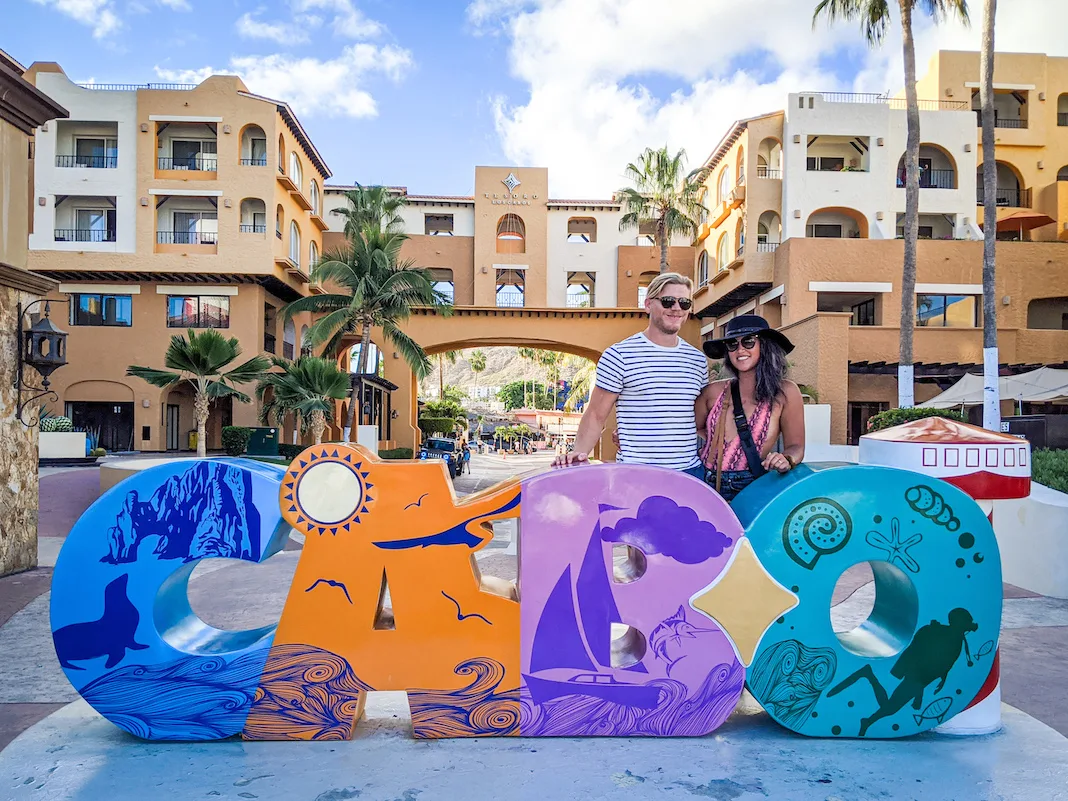
Yes, Cabo is a safe place to visit alone or with family. However, crime does occur there, so being extra cautious will help you avoid harmful situations.
Below are some tips and tricks to help you experience Cabo in the safest possible way.
Essential tips for staying safe:
- Learn some fundamental Spanish words and phrases
- Walk around well-lit central streets and tourist zones
- Don’t take street taxis to avoid getting scammed
- Uber is a great taxi option. However, it’s only available in the center and doesn’t pick up tourists from resorts
- Purchase a Mexican SIM card
- In case of an emergency, the number for calling the police is 911; for ambulances, it’s 066; and for fire services — 080
- Check the reputation of the hotel or rental unit you want to book beforehand
- Don’t drink tap water
- Don’t draw money from public ATMs. Instead, go to the mall, supermarket, or bank
- Have some pesos on hand in case someone doesn’t accept other currencies or card payments
Tips for traveling alone:
- Inform a friend or family member back home of your travel plans and share what you’re planning to do throughout the day
- Don’t walk alone at night
- Don’t wear shiny jewelry
- Don’t bring too much cash
- Drink responsibly and be aware of what’s going on around you
- Keep an eye on your drink to be sure no narcotics are in it
- Never offer a total stranger or someone you just met your phone number or the address of your hotel
- Ignore catcallers
- If someone offers you narcotics, kindly refuse them
Tips for traveling with your family:
- Since you’ll be traveling in a large group, renting a car is safer, more dependable, and more affordable than taking a taxi or a bus
- Be careful when drinking, especially if you’re driving
- Always explore the city together and never apart
- Assemble a first-aid kit
- Always keep an eye out for your children
- For the sake of your children’s safety, avoid staying out too late in bars or restaurants
Conclusion
Are you ready to pack your bags and let Cabo San Lucas enchant you? The US State Department gives you the green light, so it’s time to arrange your vacation!
Remember to be extremely cautious while out and about. Follow the flag warnings on the beach, and don’t overestimate your swimming abilities. Travel safely, adventurers!
